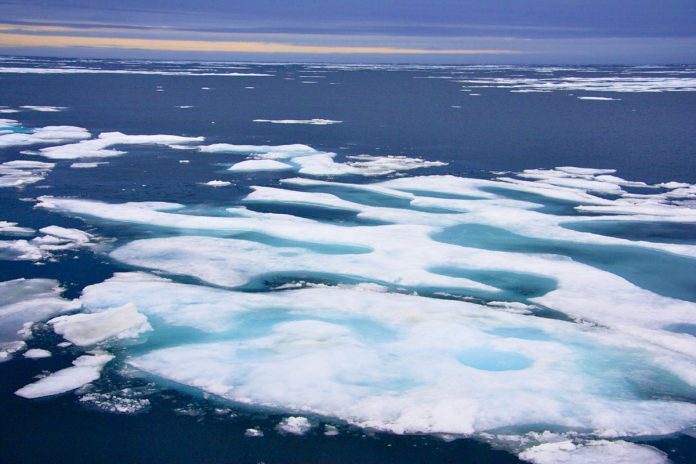News outlets are reporting the Arctic is getting very warm and the surrounding sea ice is taking a hit. Temperatures are 15 degrees higher than normal, glaciers are retreating, and the north shore of Svalbard has no visible ice. There’s only one problem: that was in 1922, not 2023. So it’s surprising to read breathless accounts today of the Arctic experiencing the same issues as nearly a hundred years ago. Tony Heller, who writes regularly on the Arctic and runs the popular climate site Real Science, calls this cherry picking your data.
According to Mark Serreze, director for the U.S. National Snow and Ice Data Center (NSIDC), there has never been such a “warm, crazy winter in the Arctic.” He also adds the heat has been relentless and that global warming is to blame. That’s true, Heller writes, if you consider -20 degrees Celsius ‘hot’ or overlook the historical record that goes back to when “fishermen, seal hunters, and explorers” sailed the Arctic seas (see PDF).
Sea ice extent is when the Arctic normally reaches its highest coverage, and so far it’s on track with previous years (see slideshow). With one exception being the Barents Sea, which is slightly under the mean average for 1979 to the present (when satellite tracking began). But as Heller correctly observes, the 1990 Intergovernmental Panel on Climate Change (IPCC) report included “satellite ice records back to the early 1970s – when ice extent was low.”
In 2007, Serreze also said: “The Arctic is screaming,” and worried that global warming had passed an “ominous tipping point.” Headlines blared that all Arctic ice could be gone by 2012. Other scientists chimed in as well, speculating back then summer sea ice would be gone by 2040. NASA climate scientist Jay Zwally also told the Associated Press in 2007 that after reviewing the data, “The Arctic Ocean could be nearly ice-free at the end of summer by 2012.” (see slideshow)
Zwally also said at the time that the Arctic was the canary in the coal mine, and the “canary has died. It is time to start getting out of the coal mines.” Nine years later, and Arctic sea ice has been well within the mean average of the satellite era, and higher than the observational area as indicated above. And contrary to the alarmist narrative, a new comprehensive study shows that polar bears are not undergoing a “climate crisis” from so-called melting sea ice.
Heller also plotted out the last ten years of Arctic sea ice area data and found that it had increased, saying it was the “Exact opposite of the story being pushed by government scientists.” And in 2008, James Hansen said that in “five to 10 years, the Arctic will be free of sea ice in the summer.” As previously noted, none of Hansen’s dire predictions have come true.
Since bringing global warming to the forefront of the public’s attention in 1988, Hansen has been an outspoken climate activist and arrested numerous times for illegal protests. He recently published a peer-reviewed study that claims an increase in temperatures of 2 degrees Celsius is imminent and would be catastrophic. His paper warns that humanity could face an abrupt climate shift in a few decades, as illustrated in the implausible movie ‘The Day after Tomorrow.’
As noted above, the Danish Meteorological Institute (DMI) shows the average temperature for the Arctic has been -20 degrees Celsius (see slideshow), and at times it has been 15 degrees warmer, owing in large part to the naturally occurring El Niño of 2015 that affects temperatures globally. Much of the climate alarmist rhetoric may be a byproduct of people ranking global warming as a non-issue. Consistently, and despite President Obama’s best efforts, most Americans rank “climate change” at the bottom of their elected official’s to-do list.
Over the last decade, numerous government agencies have predicted an ice-free Arctic, and have tried to tie global warming to national security. These forecasts are based on computer models. Since 2008, and shortly after Mr. Obama’s election, these predictions have grown stronger, coinciding with the president cementing his climate legacy. Meanwhile, Antarctica has grown in size by nearly 33 percent since 1979, having the added benefit of slowing sea level rise.















